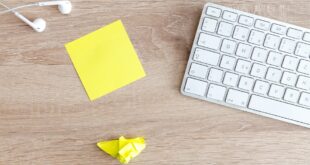10 Stunning Planets Outside Our Solar System That Will Leave You Breathless
While the planets in our Solar System are fascinating, recent discoveries have revealed a multitude of incredible exoplanets outside of it. From scorching-hot gas giants to rocky and rugged terrains, these extraterrestrial worlds offer a glimpse into the vast wonders of the universe. Here are the top ten breathtaking planets beyond our Solar System that are sure to captivate your imagination.
1. Trappist-1d
Located in the habitable zone of the Trappist-1 system, Trappist-1d is a rocky world with a high likelihood of hosting liquid water. With its compact size and close proximity to six neighboring planets, stargazers may speculate that it showcases an enormous mountain range-like terrain.
2. Kepler-186f
Discovered by NASA’s Kepler space telescope, Kepler-186f orbits a red-dwarf star and has a larger mass than Earth. With an estimated surface temperature that might be comfortable for liquid water to exist, the planet also lacks the atmosphere of toxic ammonia that’s believed to alloy habitability to planets. As a response, perhaps the terrain on this planet might look comparable to the various regions on Earth that were too barren.
3. CoRoT-7b
The first exoplanet discovered to exhibit a solid core with radio waves was CoRot-7b. Located in the Monoceros Constellation and a primary part of the CoRoT-7 system, this planet is known for its rocky surface, periodic spikes in temperature, and the storms that thrive in the gaps between its heaving seasons.
4. HD 219134 b
This super-Earth planet in Cassiopeia contains on its surface crustal formations made partially of molten nitrogen. Although the process has faded from that long-frozen lava, its warm temperature still allows visitors to witness its celestial beauty.”
5. WASP-12b
Located a little less than 1,400 light-years from Earth, WASP-12b is a gas giant exoplanet classified as a “hot Jupiter.” As one of the two planet stars in the WASP-12 system bright enough to identify potential planets orbiting nearby, this planet is known for its relative brightness compared to other hot Jupiter-type planets.
6. 55 Cancri e
Known fondly as the “diamond planet,” because of its extremely high density and the presence of diamond crystals may abound on its surface, this exoplanet was discovered in 2004. It’s so close to its sun that it gyrated completely — a “year” — in just 18 hours. It also possesses several protective shields on the waist because of the intense heat it faces from its star.
7. Gliese-667Cc
The Red Dwarf system in Scorpius houses the Gliese 667Cc, which is one of the closest exoplanets to Earth. The potentially habitable super-Earth weighs up to 4.5 times the earth, with about 2,300 light-years from the sun. With a largely bamboo-like vertical system, the planet might have an up-and-down kind of weather occurrence — heavy rainfall on towering features with a fluctuation of dry regions in between.
8. Kepler-438b
Also known as Earth’s “older cousin,” Kepler-438, competes as the fifth carlest of more than the 4,000 detected exoplanets so far. Its mass indicates that it has a surface covered mostly in rock and contains “moderate” potential. Onlookers may imagine the possibility of undulating yet friendly mountain ranges on this exoplanet.
9. K2-18
sited between Leo and Cygnus connecting familiar stars to Galactic North and Zodiac Knights this planet orbits a star like it is half which is known as k18 b. The planet surface is made from rock and molten glass and thrives potentially and dynamically further living conditions than earth. With the liquid oceans dominating for observance from outside New Scientist ; surmised that it will look like the blue-azure-bittersweet.
10. HD 10180 g
The ninth planet in orbit around HD 10180, which is classified as a metal-rich dwarf star, has multiple super-Earths with two rings of debris that may seem breathtaking in glimpses. Glitzy and full of substances, the oceans showing patina colors denote the underlying plate tectonics indicating a raging activity within.
With the ongoing technological advancements and the expansion of space exploration, it is exciting to learn about the exoplanets that continue to be discovered beyond the reaches of the Solar System.
 Mind Uncharted Explore. Discover. Learn.
Mind Uncharted Explore. Discover. Learn.



